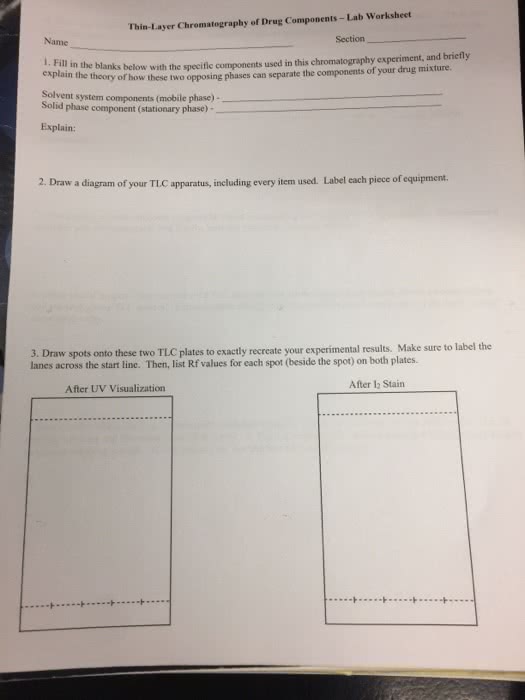CHE 211 Study Guide - Midterm Guide: Column Chromatography, Silica Gel, Adsorption

Organic Chemistry 2 – Chemical Purification & Separation
Thin Layer Chromatography
TLC is a technique used in both industry and academic research as a way of separating
the components of a mixture
TLC can separate the components of a mixture by exploiting the interactions of each
component with the solvent, with the TLC plate and the molecular weight of each
component in the mixture
▪ TLC is closely related to column chromatography; instead of using a column, a
TLC plate is used and instead of travelling down the column, the solvent and
compound travel UP the TLC plate by capillary action
TLC Plate: adsorbent is coated (coated with a thin layer of silica gel or alumni) on a piece
of glass or plastic, which usually contains a fluorescent indicator (the adsorbent is the
stationary phase)
θ The TLC plate is prepared by drawing a baseline on the
plate using a pencil approximately 1cm from the bottom end
of the plate
θ A second line is drawn 4cm above the baseline this is
called the solvent front (solvent front is 4 cm higher than the
baseline)
θ As you can see from the picture to the left, small amounts
of the 5 different compounds to be tested that have been
dissolved in the appropriate solvent are spotted on the
baseline of the TLC plate using a small micro-pipette (the
spots are placed as far apart as possible to prevent bleeding (this is where the spots
combine as they move up the plate)
find more resources at oneclass.com
find more resources at oneclass.com
Document Summary
Organic chemistry 2 chemical purification & separation. Tlc is a technique used in both industry and academic research as a way of separating the components of a mixture. Tlc plate is used and instead of travelling down the column, the solvent and compound travel up the tlc plate by capillary action. Tlc plate: adsorbent is coated (coated with a thin layer of silica gel or alumni) on a piece of glass or plastic, which usually contains a fluorescent indicator (the adsorbent is the stationary phase) The tlc plate is prepared by drawing a baseline on the plate using a pencil approximately 1cm from the bottom end of the plate. A second line is drawn 4cm above the baseline this is called the solvent front (solvent front is 4 cm higher than the baseline) The spotted plate is developed by placing it in a jar with the eluting solvent (mobile phase)


